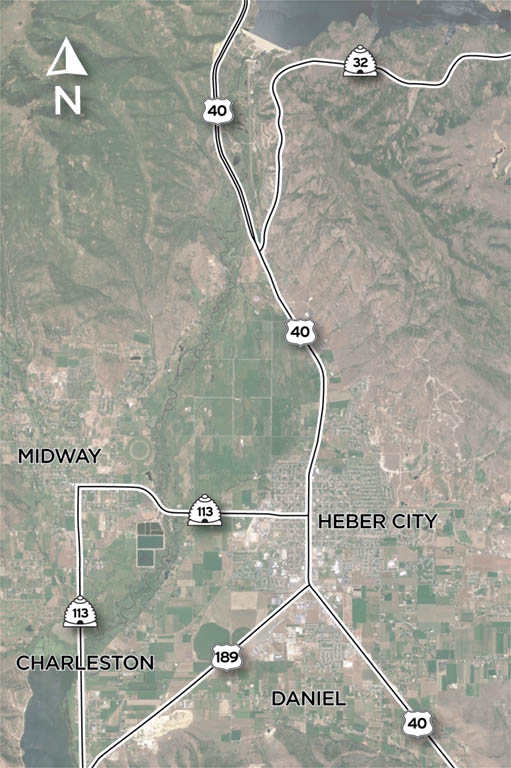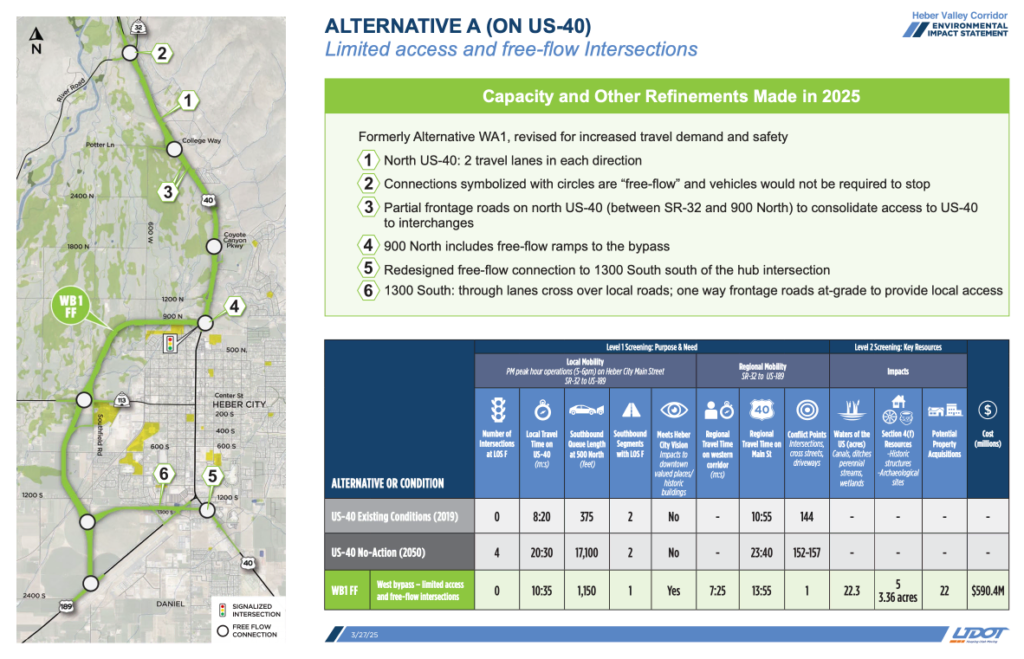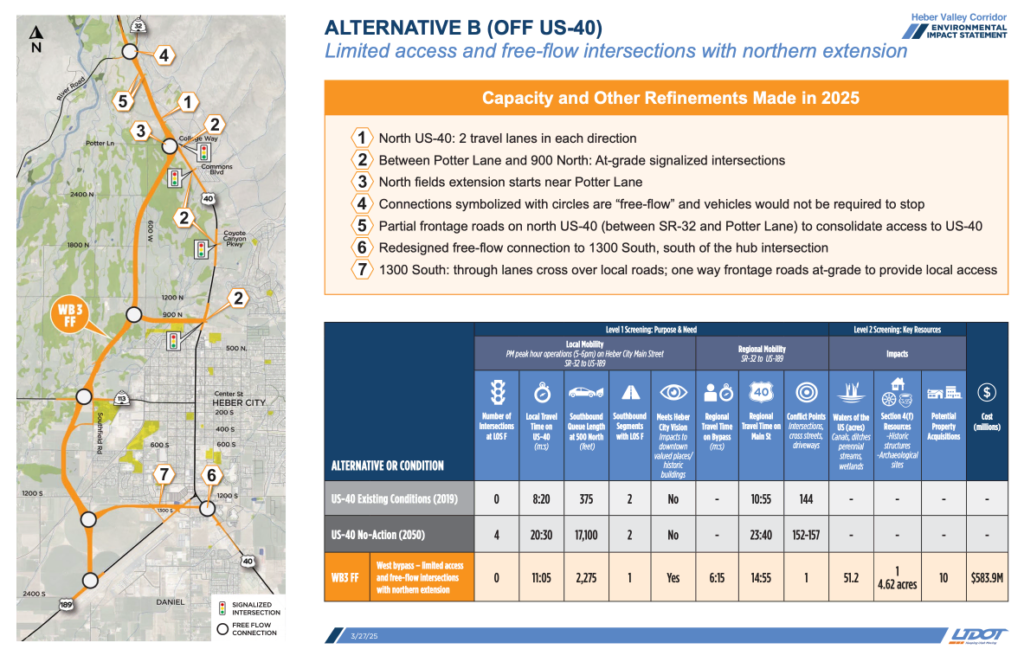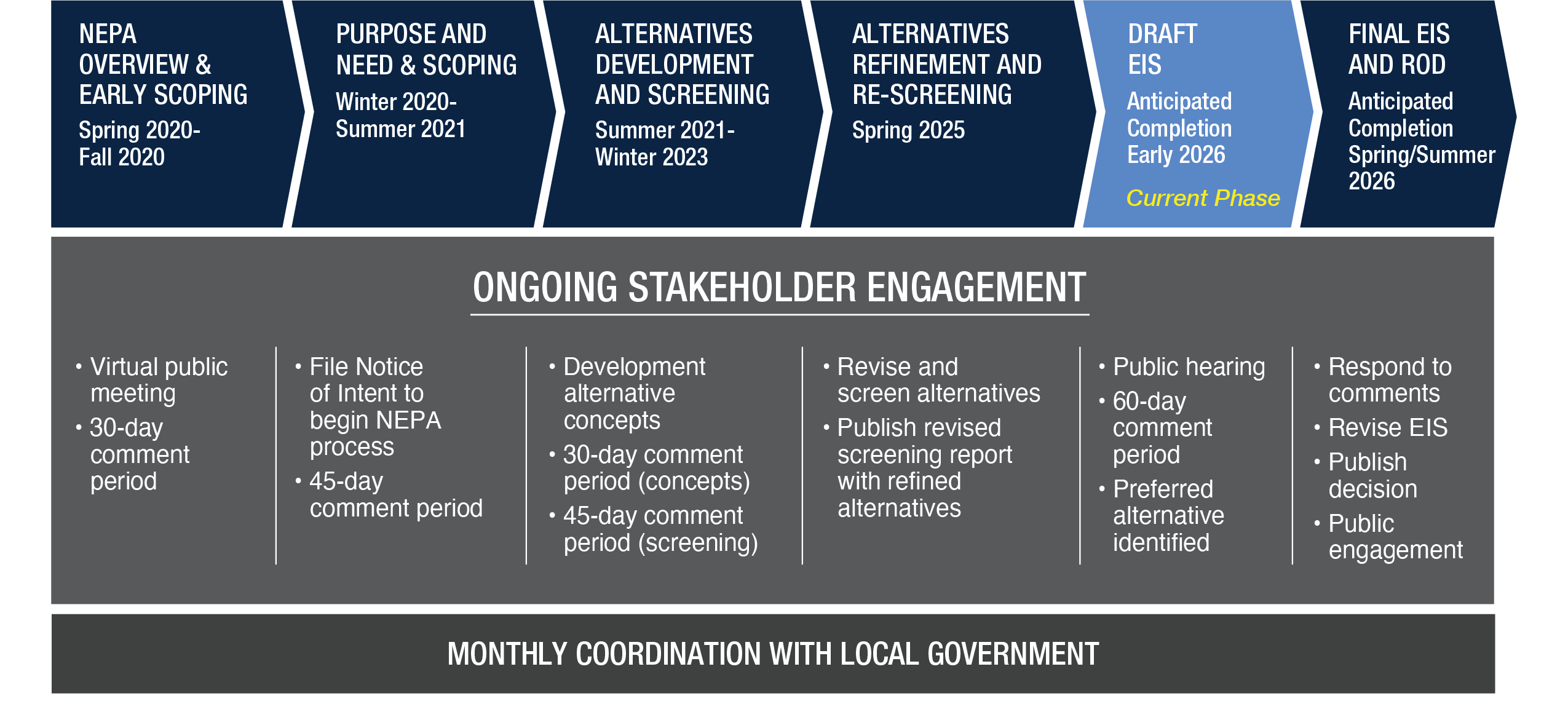Study Overview
The Utah Department of Transportation’s (UDOT) mission is to keep Utah moving while enhancing quality of life through transportation improvements in our state. UDOT is conducting an Environmental Impact Statement (EIS) to improve regional and local mobility on US-40 from SR-32 to US-189 and provide opportunities for non-motorized transportation while allowing Heber City to meet its vision for the historic town center.
Project Update
Revised Date: 12/17/25
Recent activities include updates to local councils and responding to stakeholder questions. Ongoing efforts focus on completing final technical reviews and compiling the Draft EIS. The Draft EIS and preferred alternative are expected to be published on Jan. 7, with the formal 60-day public comment period beginning on Jan. 9 and ending on Mar. 9.
Study Area
The Heber Valley Corridor EIS project team will be working with the stakeholders to evaluate improvements to address and enhance mobility through the Heber Valley and improve the operation of Heber City Main Street (US-40).
Through this process UDOT will develop transportation alternatives that could include a variety of solutions including reconfiguration of Main Street, improvements to other area roads, constructing new roads, and other options identified by the public.
Alternatives Being Studied in the Draft EIS
The map below shows the similarities and differences between the final two alternatives in the study. Our team is currently refining these alternatives and performing additional analysis ahead of releasing the Draft Environmental Impact Statement later this fall. At that time, the public will have an opportunity to review the alternatives more closely and provide feedback to our team.
Current Phase
Revised Date: 12/17/25
PROJECT UPDATE
A status update of activities on the EIS through November and what to expect in coming months.
Schedule Update
We plan to publish the Draft EIS, including identification of the preferred alternative, on Jan. 7 on our website. The 60-day formal public comment period will begin on Jan. 9, which is when the Draft EIS is published on the Federal Register, and run through Mar. 9.
We will also host a virtual public meeting on Jan. 27 from 6 p.m. to 7:30 p.m., and an in-person public open house on Jan. 28 from 5:30 p.m. to 8:30 p.m. at the Wasatch High School Library, with a presentation and hearing from 6 p.m. to 7:30 p.m. at the same location.
The project team will present the Draft EIS and preferred alternative to the Wasatch County Council Work Session at 4 p.m. on Jan. 14 and the Heber City Council Work Session at 4 p.m. on Jan. 20.
Once the Draft EIS is published in January, we will share information via the following methods on how to review materials and submit formal public comments:
- Study website
- Salt Lake Tribune, Deseret News
- Community newsletters
- Social media (Study Facebook Group)
- Social media ads
- Mailed postcards
How your comments will be used
- Once the Draft EIS is published, there will be a 60-day formal public comment period (this is the maximum amount of time allowed by law)
- Public comments submitted during the public comment period are not considered a vote.
- Comments are one input among many that we will use to make final updates and decisions regarding the project.
- Comments will be used to consider things that may have been overlooked, such as property or environmental impacts.
- Guidelines to submitting a comment:
- Clearly identify the issue or resource you’re concerned about.
- Reference specific sections or topics in the Draft EIS.
- Include data, citations, observations, or personal experiences that support your comment.
- Comments like “I don’t like this project” or “This will ruin Heber City” are noted but are more helpful if they include specific reasons based on the analysis. A better comment could be “I don’t like this project because it impacts…” or “I support this project because…”
- Comments are more impactful when they are solution-oriented.
- Comments may also be in the form of a question, in addition to statements.
- For more info on the environmental process and how your comments are used, UDOT has prepared this informational EIS Video. Specific information regarding comments is found at timestamp 3:32.
What to expect at the public meetings
UDOT will host two public meetings during the formal public comment period.
- A virtual public meeting will be held first and will provide a presentation and Q&A session.
- Formal comments will not be taken at this meeting
- An in-person public hearing, held second, will include several options for making a comment, including a public format for community members to make a live comment so others can hear them.
- UDOT will be present and listen to the public comments and the comments made will be recorded by a court reporter.
- All comments will be responded to in the Final EIS, not during the meeting.
- Those who wish to speak will be encouraged to sign up for a spot in advance of the public hearing. More details on this will be available once the Draft EIS is published.
- There will also be an open house concurrent with the public hearing where community members may speak directly with and ask questions to project team members and UDOT ROW agents.
As a reminder, we are allowing two additional days for public review of the Draft EIS, but the formal public comment period begins on Jan. 9 and ends on Mar. 9. To submit a formal comment, please submit them via phone, email, website comment, comment drop off box, or comment form or court reporter at the public hearing.
More detailed information on the previously proposed alternatives and the analysis published to-date is available on the study website: https://hebervalleyeis.udot.utah.gov/alternative-screening/.
Current And Upcoming Activities
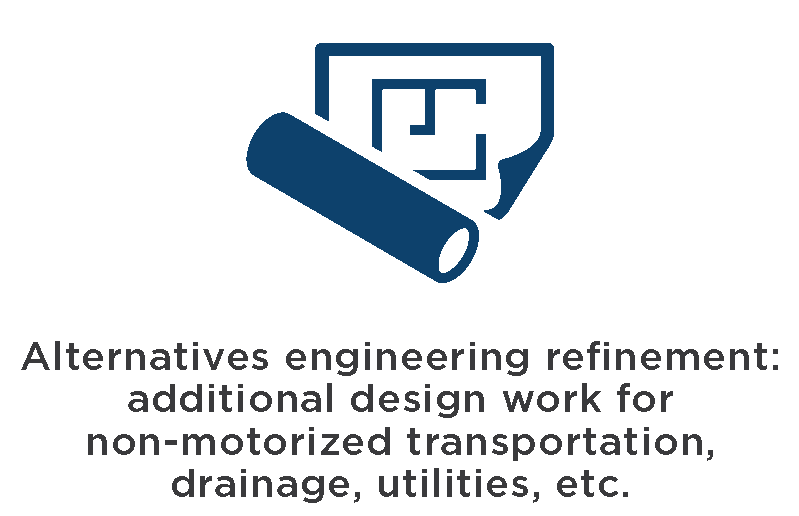
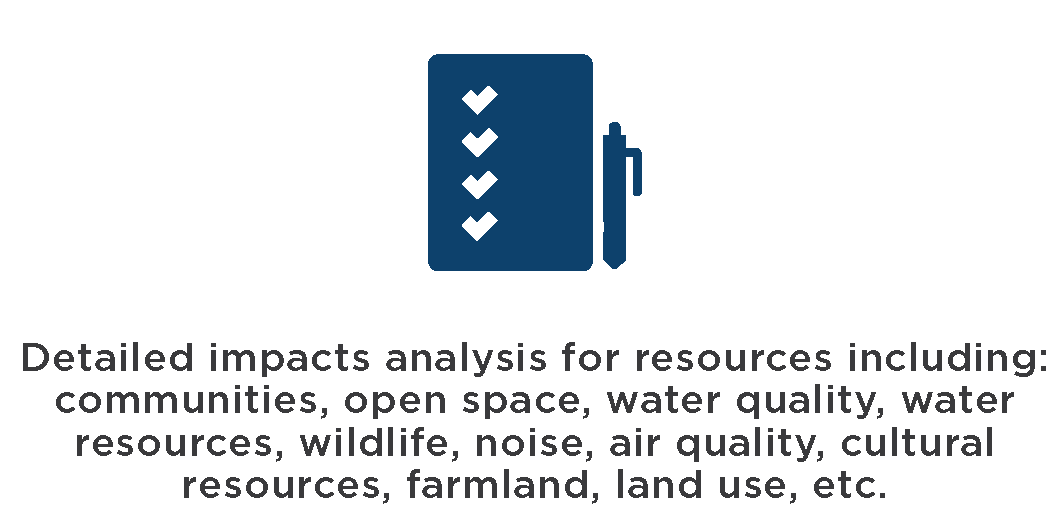
Submit Comment
Comments provided to the project team will be reviewed and considered by UDOT as it develops the project. All comments received will be documented in the project record. The study team will contact you if they need additional information or clarification.
Comments provided during the National Environmental Policy Act (NEPA) process to UDOT are a matter of public record and subject to public release, if requested. For more information, see the Terms of Use at the bottom of the Utah.gov website.
Comments that are publicly displayed through online tools must follow our UDOT Social Media Policy Participant Code of Conduct. Comments that are unacceptable under that policy may be removed at the administrator’s discretion.
If you receive an error when trying to submit a comment, please refresh your browser.
Please provide your name and email to submit a comment. After clicking ‘Comment’, please email hebervalleyeis@utah.gov to confirm receipt.
Contact Us
For more information on the environmental study underway in the Heber Valley and to share your ideas, please contact the project team through one of the ways listed below.
Write Us A Letter
Heber Valley Corridor EIS
c/o HDR
2825 E Cottonwood Parkway # 200
Cottonwood Heights, UT 84121
The environmental review, consultation, and other actions required by applicable Federal environmental laws for this project are being or have been carried-out by UDOT pursuant to 23 U.S.C. 327 and a Memorandum of Understanding dated May 26, 2022, and executed by Federal Highway Administration and UDOT.

